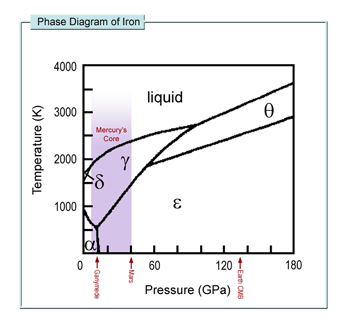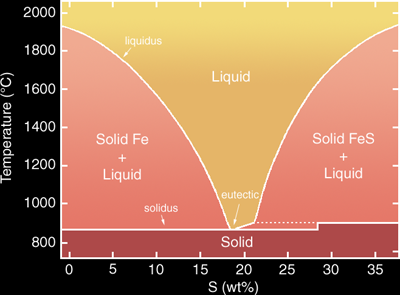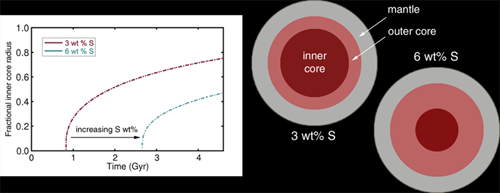
Planetary Cores: Planet cores are composed of iron (Fe) plus other, smaller concentrations of other elements. The iron, being denser than rock, sinks to the center of the planet early when the planet's interior is very hot. This is called differentiation. If Mercury has a pure Fe core, it would have completely solidified. Evidence suggests this has not happened and that at least part of the core is still molten (liquid):
Phase diagram: This figure shows the phase of Fe given temperature and pressure. The range of pressures experienced by Mercury's core can be seen and roughly corresponds to that of Mars due to similar core sizes, but lower pressure near the top due to is smaller overall size similar to the Jovian moon Ganymede. A pure Fe core would cool enough to completely freeze. The greek letters indicate different lattice configurations of solid Fe
Contraction: Present-day inner core radius fraction for different amounts of core sulfur content andthe resulting radial contraction ΔR. Smaller inner cores correspond to less contraction of the planet.
Sulfur: The relatively high abundance of sulfur (S) and its ability to partition into an Fe melt makes it a likely constituent in planetary cores. The inclusion of the element has a significant effect on the core structure due to the fact that it lowers the melting temperature (liquidus) of the core as the concentration increases from 0 wt% to the eutectic.
The influence of S can be seen in model results with 3 and 6 wt% S in the core. Increasing S delays inner core formation as it requires cooler temperatures resulting in a smaller present-day core.




